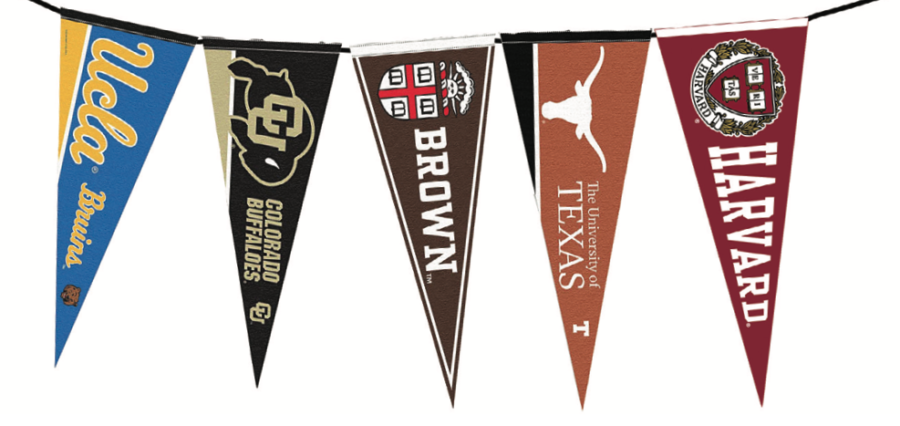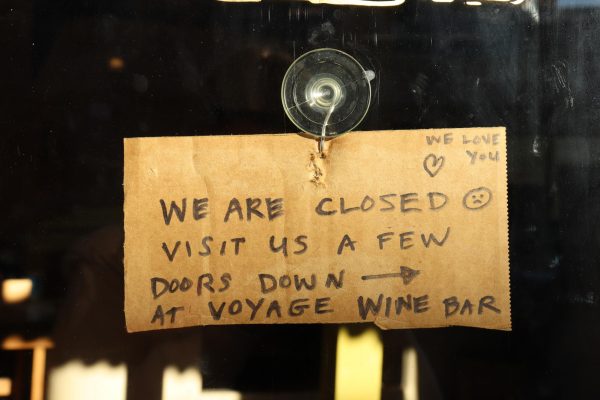Marin privilege forces college pressure onto students
Because many students at AWHS have the wealth and opportunities to attend more prestigious colleges, they often don’t take advantage of having COM so close and accessible.
In Marin County, attending a four-year college is the expected track, and most high school students spend a large portion of their school career preparing for college acceptances. The U.S. Census Bureau stated in 2015 that Marin County had the highest percentage of college graduates in the state of California.
As of 2021, 60.2 percent of Marin residents 25 and older have received at least a bachelor’s degree. In the June 2021 “Adversity and Hope” issue of The Pitch, the college map showed that 3.79 percent of last year’s graduating seniors entered the workforce and 6.31 percent took a gap year. The remaining 89.9 attended a college or university.
Archie Williams High School (AWHS) counselor Kyle Kassebaum helps students with their next steps after high school including the college application process. Kassebaum says the number of seniors applying to college has not varied much in his 10 years at AWHS.
“I think [college is] viewed in Marin by a lot of people out there as something that is an automatic or a given…I think there are families out there that feel like it’s either that or failure,” Kassebaum said.
In Marin, many students’ families can afford personal college and test prep counselors, which assure a higher chance of getting accepted into their college of choice. Although these resources improve college acceptance chances, the prices for these services are more accessible for higher income families. According to US News, package fees for tutoring and college guidance can range from $850 up to $10,000.
Lia Lackey is a Managing Director of the Larkspur based tutoring service Compass Education Group. For those who can afford tutoring services like Compass, it can provide an advantage in college admissions.
“It’s true that average test scores are higher among sub-groups who have the most advantages [such as] parental education, income, schooling and tutoring/prep,” Lackey said. “…An average program costs around $5,000 but we have clients spending a lot less and others that choose to invest more.”
To score higher on SAT and ACT tests, Marin County residents commonly use test prep counselors to help students prepare. This causes a noticeable score gap between high and low-income groups. According to a 2021 Forbes article, “Students with family income of $100,000 or more are more than twice as likely as students with family income under $50,000 to have combined SAT test scores of 1400 to 1600.”
Not only do students’ families hire test prep counselors to help them score higher on certain tests, the tests themselves require a registration fee. This year, AP tests were $125 each. If a student were to take multiple AP tests, which college counselors recommend in order to strengthen college applications, they must pay at least two to three hundred dollars in testing fees. If the student comes from an economically underprivileged family, where does this leave them?
Junior Audrey Reeb has noticed the heavy focus on college preparation at AWHS, causing the standards that push families to compete for college admissions with testing and private counselors.
“I think that Marin often has a very privileged and rigorous outlook on college,” Audrey said. “…something I’ve learned recently is that there isn’t a set list of rules you need to follow in life to get to a successful place. You don’t need to go to an Ivy League school to have a fulfilling career or life. Sometimes I feel like the rigorous attitude towards college in Marin overlooks that.”
College of Marin (COM), although ranked as the number one community college in California by Academic Influence, isn’t met with the same praise as four-year universities. For some, this is reason enough to rule COM out, despite its noticeably smaller tuition fees. According to their websites, the average UC tuition costs $13,000 to $15,000 per year (not including housing, meal plans, and additional fees such as textbooks), while in-state tuition for COM rests at $1,494 per year.
Because many students at AWHS have the wealth and opportunities to attend more prestigious colleges, they often don’t take advantage of having COM so close and accessible. Not only can community college be a more financially viable option, but for some, a four-year college isn’t always the right path, as some already have a career path in mind that can be accomplished through an associates degree.
“[College of Marin isn’t] just a place where you go to transfer somewhere else. There’s a lot of different programs there in I.T. and some medical fields that don’t require going to a four-year college and there’s a lot of great professions out there…it’s something that we’re trying to make sure that students know is out there,” Kassebaum said.
While some affluent Marin families can afford college guidance and tutoring, other families must find alternative routes to academic success. Opportunities such as community college may prove to be viable options for those seeking to avoid unnecessary expenses.

Izzy is a sophomore, in her second year of journalism. She enjoys reading fantasy books, her family and eating anything with sugar. You can find her at...

Dylan is a senior, starting her fourth year in journalism. She enjoys reading fictional books, camping, spending time outdoors, and listening to 70s music....

Charlie is a senior in his third year of journalism. He loves playing volleyball, making music, and eating. You can find him in his room playing music.







